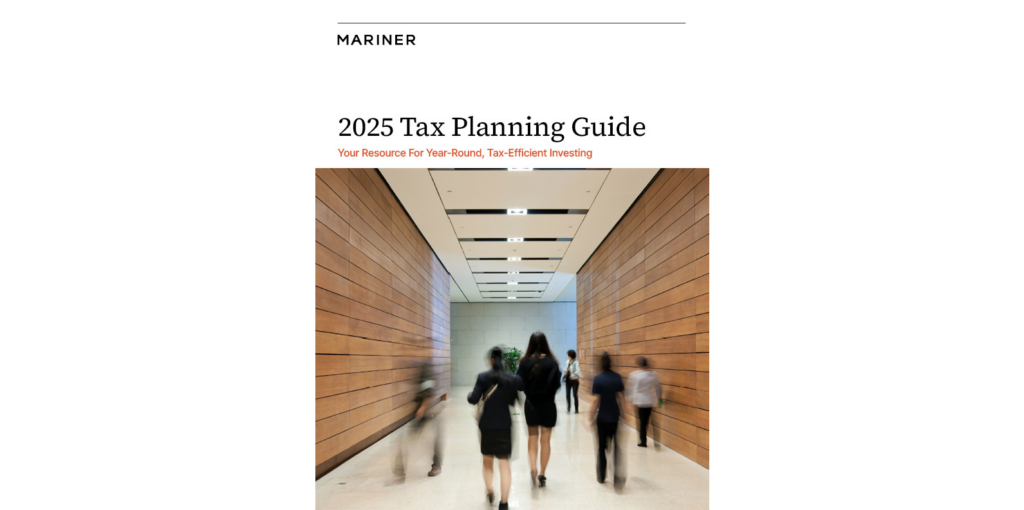The Dec. 31 Deadline for RMDs: What You Need to Know
With the end of the year approaching, it’s time to make sure you’ve taken, or have a plan to take, required minimum distributions (RMDs) from your retirement accounts. As a result of the SECURE 2.0 Act of 2023, many of the rules around RMDs have changed, so it’s important to be aware of your current distribution requirements.
The SECURE 2.0 Act contained some positive changes for taxpayers, including increased RMD ages, reduced penalties and elimination of Roth 401(k) RMDs. Some of these changes are good news for taxpayers when it comes to the potential to maximize growth in your tax-advantaged retirement accounts. But failing to follow the rules can still lead to costly penalties, not to mention aggravation, so it’s important to review your distribution requirements.
RMD Age Requirements
Prior to the SECURE 2.0 Act, RMDs started at age 72 for everyone. The legislation raises the ages, depending on when you were born. If you turned 72 in 2022 or earlier, you were still required to start taking RMDs at age 72. But you don’t need to start taking RMDs until 73 if you reached that age in 2023 or 2024. And beginning in 2033, the RMD age will increase to 75. That means that if you turn 73 in 2033 or later, your RMD age will be 75.1
There are a few exceptions to the RMD rules. Under the “still working” exception, you may be able to delay RMDs from your current employer’s 401(k) until you retire. Another exception is for Roth IRAs, which don’t require RMDs for the original owner during their lifetime.
Yearly Deadlines
If you’re new to taking RMDs, you’ll get a grace period to make the transition. Your first distribution can be taken by April 1 of the year following the year you turn 73. For subsequent years, RMDs must be taken by Dec. 31. Several types of retirement accounts are subject to RMDs:
- Traditional IRAs
- SEP IRAs
- SIMPLE IRAs
- 401(k) plans
- 403(b) plans
There’s good news for those with Roth 401(k) accounts, however. Starting in 2024, the accounts will no longer be subject to RMDs during the account owner’s lifetime.2 This aligns them with Roth IRA rules. Note that inherited IRAs are subject to complex RMD rules; your tax professional can help you understand them.
Penalties for Breaking the Rules
Under the SECURE 2.0 Act, penalties for running afoul of RMD rules have been eased, but they’re still significant. The levy for failing to take an RMD has been reduced, for instance, to 25% of the amount not distributed. That’s down from 50% before the legislation. And if the missed RMD is corrected in a timely manner, the penalty may be reduced to as little as 10%.3 Remember, penalties are levied in addition to income taxes—so the combined cost of missing RMDs can be painful.
How RMDs Are Calculated
RMD calculations are relatively simple for one account but require more work if you have multiple retirement accounts. With a single account, the distribution is calculated by dividing your account balance as of Dec. 31 of the previous year by a life expectancy factor that is provided by the IRS. If you have multiple IRAs, you must calculate the RMD for each account separately. However, you can withdraw the total amount from one or more of your IRAs.
Planning Strategies
There are often opportunities to manage RMDs in support of financial planning goals. For example, if you don’t need your full RMD amount in a given year, you might consider donating directly to charity through a qualified charitable distribution (QCD). Doing so helps you fulfill your RMD while reducing your taxable income.
Other Considerations
RMD season is a good time to review your accounts’ beneficiary designations. It’s important to ensure that they continue to align with your current wishes. Given the sometimes-complex rules around RMDs, the potential to integrate them with planning goals and the importance of avoiding penalties, consider consulting with your wealth advisor and your tax professional to help guide your decisions.
Source:
1-3 “SECURE 2.0: Rethinking retirement savings”
This material is provided for informational and educational purposes only. It does not consider any individual or personal financial, legal, or tax circumstances. As such, the information contained herein is not intended and should not be construed as individualized advice or recommendation of any kind.
The information provided herein is believed to be reliable, but we do not guarantee accuracy, timeliness, or completeness. It is provided “as is” without any express or implied warranties.
Mariner is the marketing name for the financial services businesses of Mariner Wealth Advisors, LLC and its subsidiaries. Investment advisory services are provided through the brands Mariner Wealth, Mariner Independent, Mariner Institutional, Mariner Ultra, and Mariner Workplace, each of which is a business name of the registered investment advisory entities of Mariner. For additional information about each of the registered investment advisory entities of Mariner, including fees and services, please contact Mariner or refer to each entity’s Form ADV Part 2A, which is available on the Investment Adviser Public Disclosure website. Registration of an investment adviser does not imply a certain level of skill or training.

